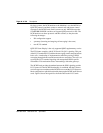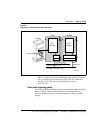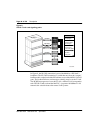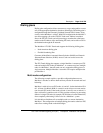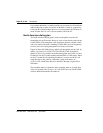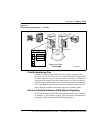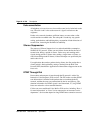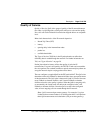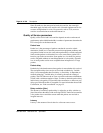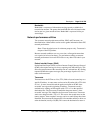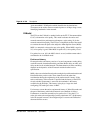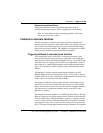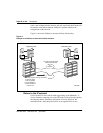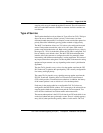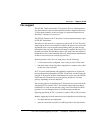
Page 54 of
378
Description
553-3001-202 Standard 1.00 April 2000
Since IP trunks use the same port for both voice and fax, the same QoS
thresholds apply for both voice and fax calls. Network requirements for fax
are more stringent than for voice. Fax protocols, such as T.30, are more
sensitive to transmission errors than the human ear.
Quality of Service parameters
Quality of Service for both voice and fax depends on end-to-end network
performance and available bandwidth. A number of parameters determine the
ITG voice QoS over the data network.
Packet loss
Packet loss is the percentage of packets sent that do not arrive at their
destination. Packet loss is caused by transmission equipment problems and
congestion. Packet loss can also occur when packet delays exceed configured
limits and the packets are discarded. In a voice conversation, packet loss is
heard as gaps in the conversation. Some packet loss, less than five percent,
can be acceptable without too much degradation in voice quality. Sporadic
loss of small packets can be more acceptable than infrequent loss of large
packets.
Packet dela
y
Packet delay is the time between when a packet is sent and when it is received.
The total packet delay time consists of fixed and variable delay. Variable
delay is more manageable than fixed delay, as fixed delay is dependent on
network technology. Variable delay is caused by the network routing of
packets. The ITG node must be as close as possible to the network backbone
(WAN) with a minimum number of hops, in order to minimize packet delay
and increase voice quality. ITG provides echo cancellation, so that a one-way
delay up to 200 milliseconds is acceptable. For more information about Echo
Cancellation, see “Echo cancellation” on page 52.
Dela
y
variation (
j
itter)
The amount of variation in packet delay is referred to as delay variation or
jitter. Jitter affects the ability of the receiving ITG ISL Trunk card to assemble
voice packets into a continuous stream when the packets are received at
irregular intervals.
Latenc
y
Latency is the amount of time it takes for a discrete event to occur.



